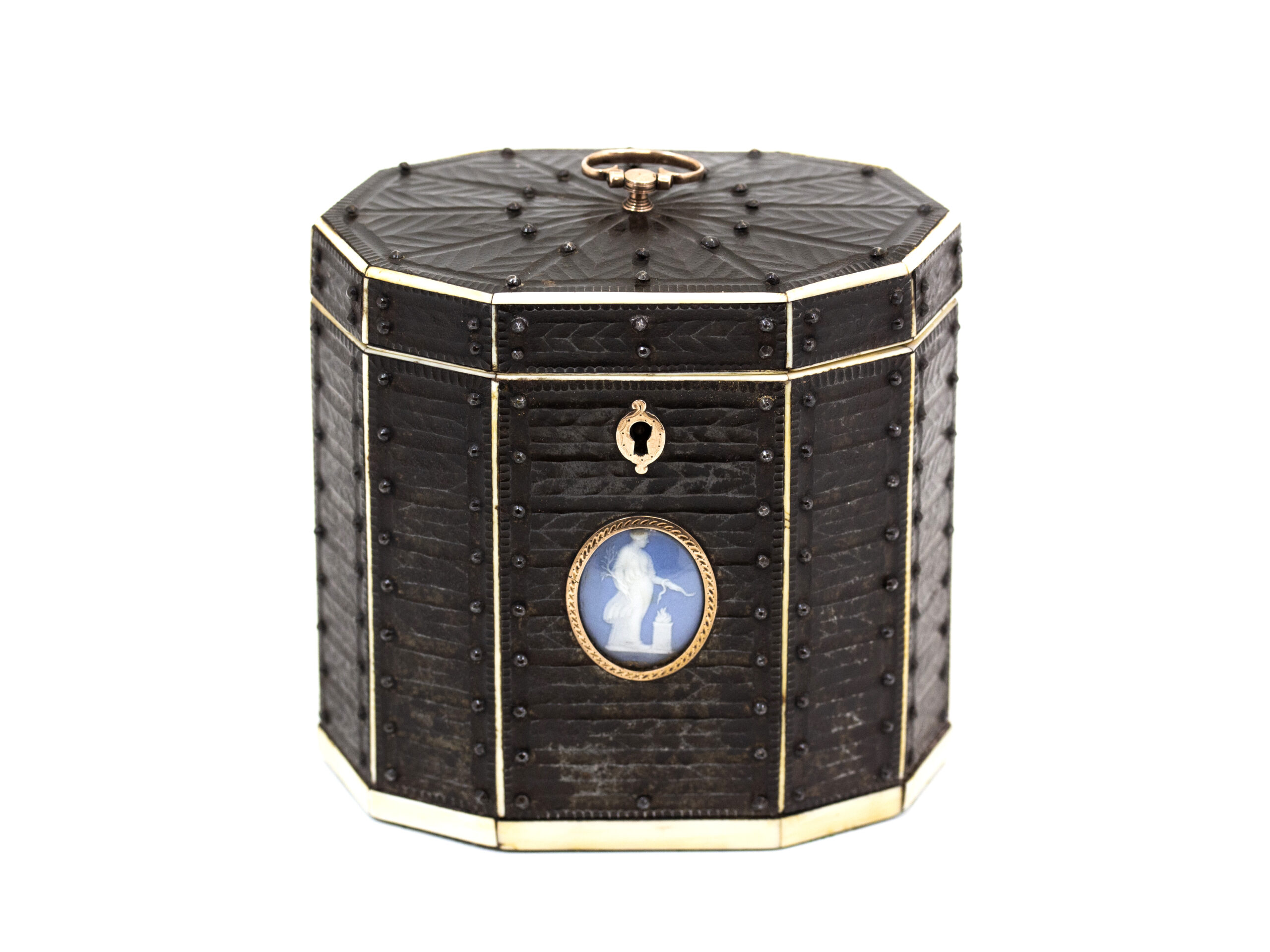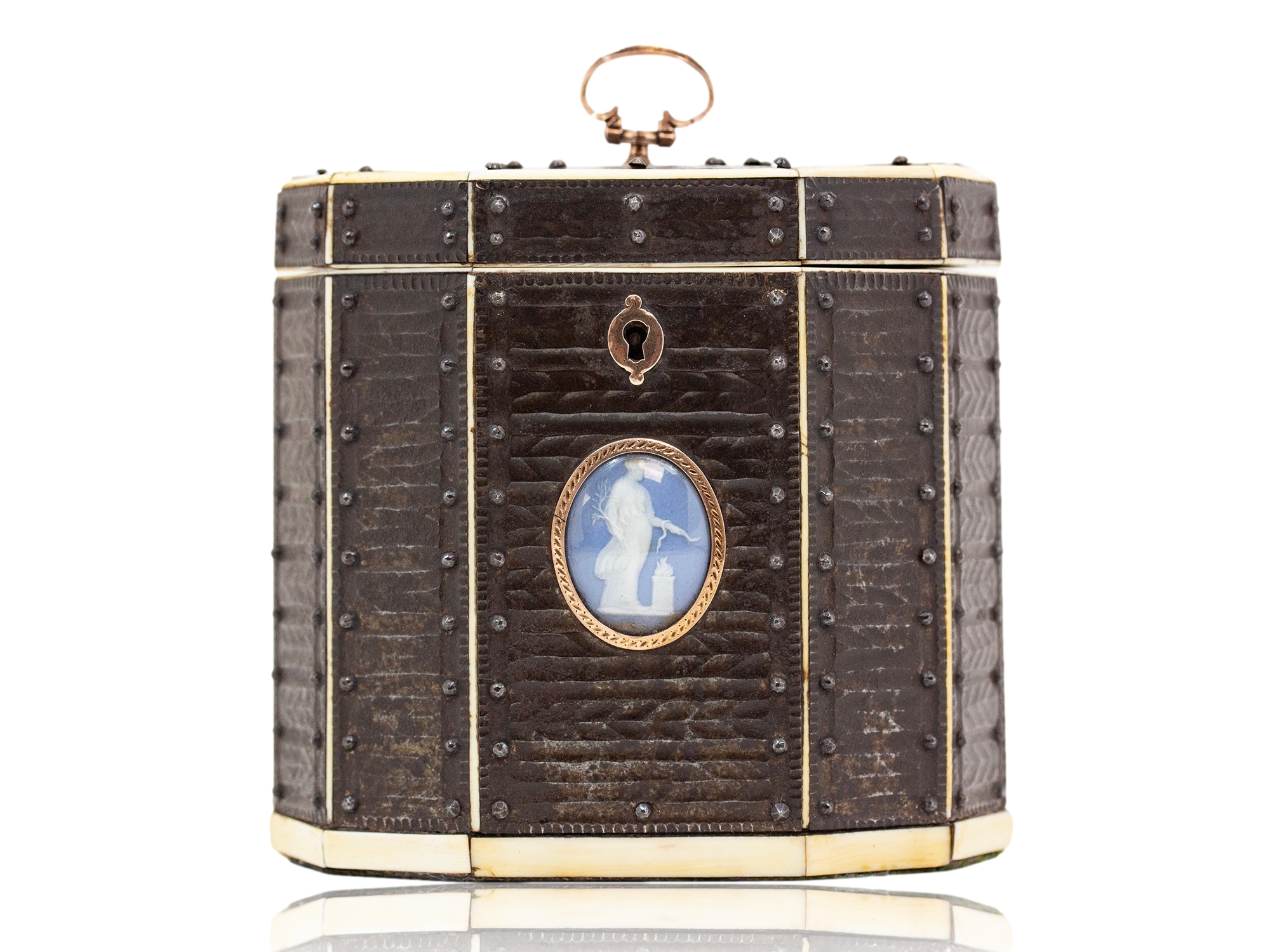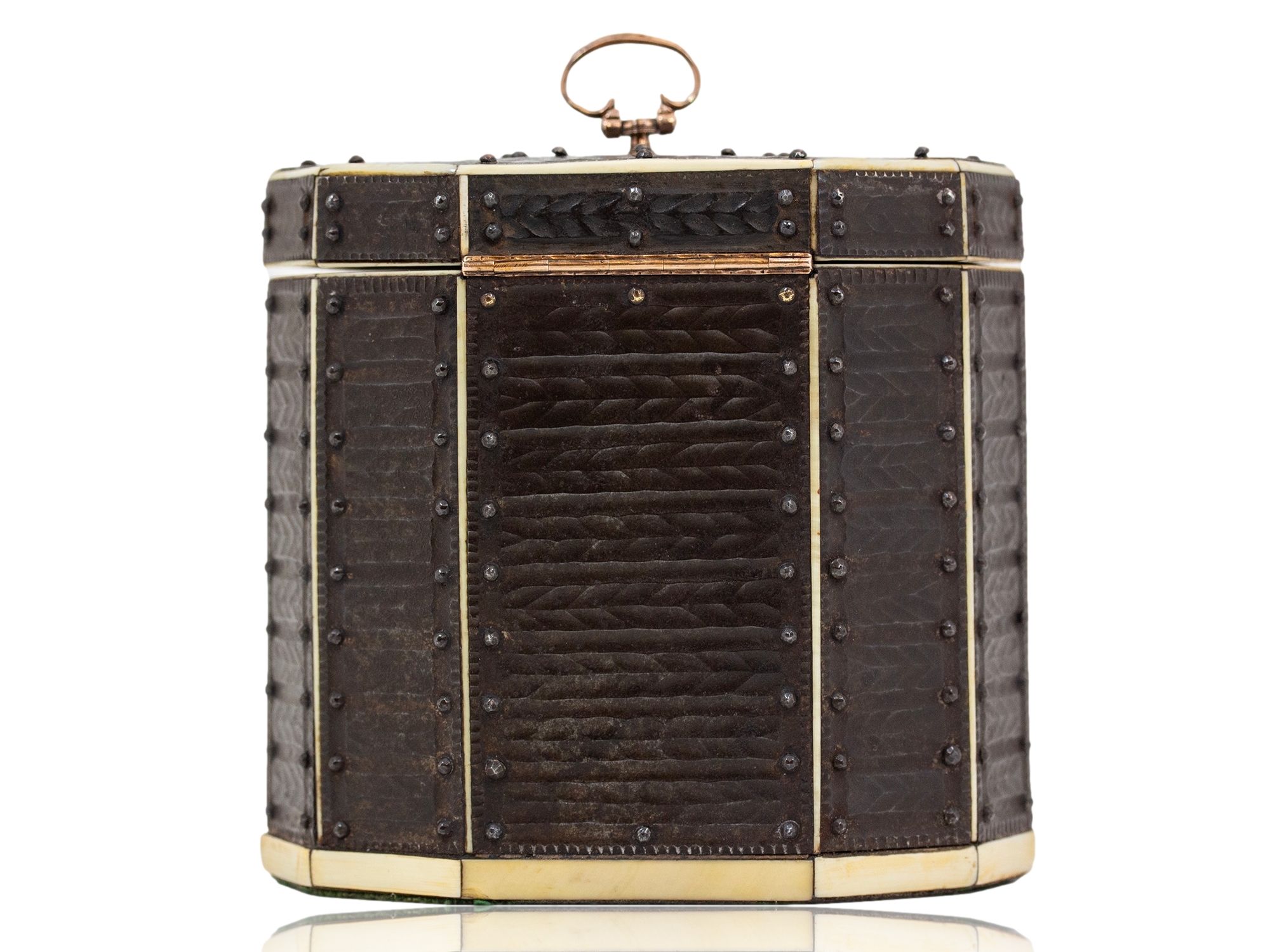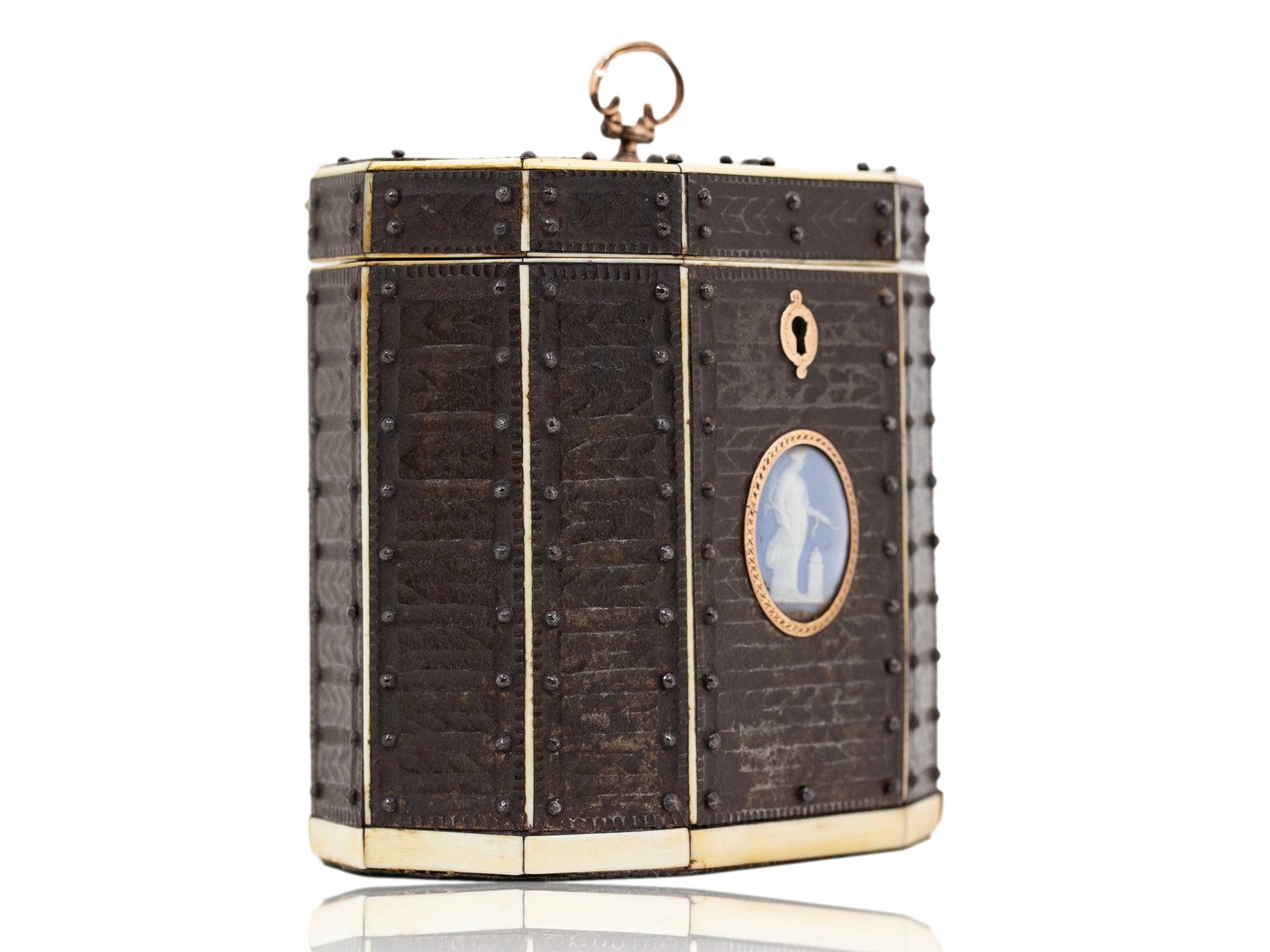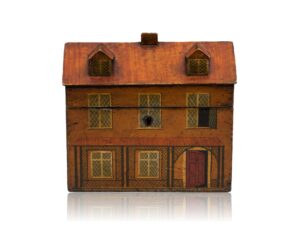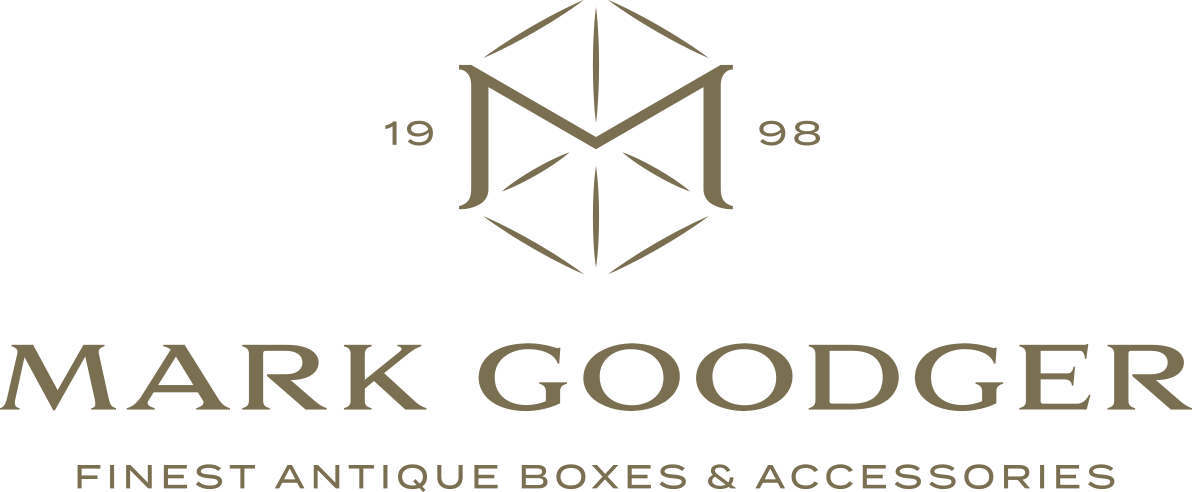Steel Cut Tea Caddy
SOLD
Steel Cut Panels From our Tea Caddy collection we are absolutely delighted to be able to bring to market this extremely rare Steel Cut Tea Caddy. The Tea Caddy of decagonal form decorated with feathered polished cut steel panels on... Read More
Extremely Rare Form
| Dimensions | 11 × 7 × 11 cm |
|---|---|
| Country | |
| Medium | |
| Period | |
| Provenance | |
| Year | |
| Literature | |
| CITES | Q32MLU3E |
| SKU | 501502 |
Description
Description
Steel Cut Panels
From our Tea Caddy collection we are absolutely delighted to be able to bring to market this extremely rare Steel Cut Tea Caddy. The Tea Caddy of decagonal form decorated with feathered polished cut steel panels on a wooden carcass decorated with hand cut steel studs edged in ivory stringing. The Tea Caddy features a central oval jasper ware cameo mounted in a glazed panel below a matching gold escutcheon and top handle. The interior of the cut steel tea caddy retains traces of the original silver foil lining. The Steel Cut Tea Caddy dates to the late 18th century Georgian period during the reign of George III circa 1780 and would have been manufactured in either Birmingham or Woodstock, Oxford, England.
Not to be confused with Russian examples known as Tula which are rather heavier and of slightly different proportions, and may have larger and more elaborate handles
Measurements (inches) 4.33 High x 4.33 Wide x 2.76
Literature Mark Goodger 25th Anniversary Catalogue Front Cover and p.18.
Steel Cut Tea Caddies see excerpt from “The Story of British Tea Chests and Caddies”
A few tea caddies veneered with panels of polished steel are known, though these are rare. Dating from the last quarter of the eighteenth century, they are of small dimensions and superlative quality. Polished steel panels are fixed to a wooden carcass and are bordered with ivory stringing along the edges and a narrow band of ivory veneer around the base. The panels are further ornamented with small steel studs and, sometimes, with cut and polished steel jewels’, while some bear a jasper cameo or a painted miniature in a steel frame on the front. The outstanding decagonal example in Figure 18.16 is decorated in this way, the steel being worked in a feather pattern and edged with studs and lines of faceting. The unusual steel and ceramic combination on this caddy brings to mind the well-recorded collaboration between Matthew Bouton and Josiah Wedgwood, with Boulton providing cut-steel settings for Wedgwood’s jasper buttons.
Hence, in 1786, Wedgwood wrote to Boulton: I have left a few sets of my cameo buttons to be mounted, and shall be glad to increase our connection in this way, as well as selling you cameos for your trade, as in having them mounted by you for mine [my business], both in gilt metal and steel. Slightly less rare are caddies veneered all over with ivory rather than steel, but decorated with small steel studs interspersed with floral and other cut-steel motifs (see Chapter 10: Ivory, Figure: 10.19). These may well have been made in Birmingham, a centre for the ivory-working trade in Britain and also for decorative cut-steel production.
Steel-covered caddies like that in Figure 18.16 bear some resemblance to others with a much more exotic origin. In Russia in the eighteenth century, the Imperial Armoury was located at Tula, about 200 kilometres south of Moscow, having been established there by Peter the Great in 1712. The Armoury produced a great range of weapons, including some firearms and swords that were finely embellished with exquisite metalwork. Many of the armourers were, therefore, highly skilled in various techniques of decorative metalwork, and so they developed a sideline in making sophisticated luxury items. These were predominantly finished in polished steel, sometimes blued, and were usually ornamented with cut-steel “jewels’ and/or beading; additional decoration might be applied in gilded bronze or brass, or even in gold or silver. Among the items made were caskets, candlesticks, vases, inkstands, perfume burners and tea caddies, plus pieces of furniture (chairs, small tables, toilet mirrors and so on). These goods were very expensive and were purchased mostly by the Imperial court, occasionally as presents for foreign dignitaries. 26
The overall form of the Tula caddies, and especially the painted miniatures that may adorn them, echo their British counterparts, but the resemblance is somewhat superficial: the Russian examples are rather heavier and of slightly different proportions, and may have larger and more elaborate handles (Figure 18.17). Some Tula makers would probably have been aware of British caddies, as there is known to have been interaction between craftsmen from Tula and British metalworkers in the late 1780s. For example, in 1787, two armourers, Andrey Leontyev and Alexey Surnin, were sent to England for several months to observe British craftsmanship, and potentially to improve their already considerable skills. They may well have encountered some of the ornamental cut-steel items produced in Birmingham and in Woodstock, near Oxford. In addition, Catherine the Great certainly encouraged the British taste with her own purchases of decorative objects from England.
Georgian, a period in British history dating from 1714-1837, the Georgian era after the Hanoverian kings George I, George II, George III and George IV.
With every purchase from Mark Goodger Antiques, you will receive our latest catalogue, a Certificate of Authenticity, detailed care instructions for your chosen piece and an independent invoice (for insurance purposes) will be enclosed. As well as being protected by a no-hassle, money-back policy, your piece will be entirely insured during the shipping process to ensure the safety of your item.
Additional information
Additional information
| Dimensions | 11 × 7 × 11 cm |
|---|---|
| Country | |
| Medium | |
| Period | |
| Provenance | |
| Year | |
| Literature | |
| CITES | Q32MLU3E |
| SKU | 501502 |
